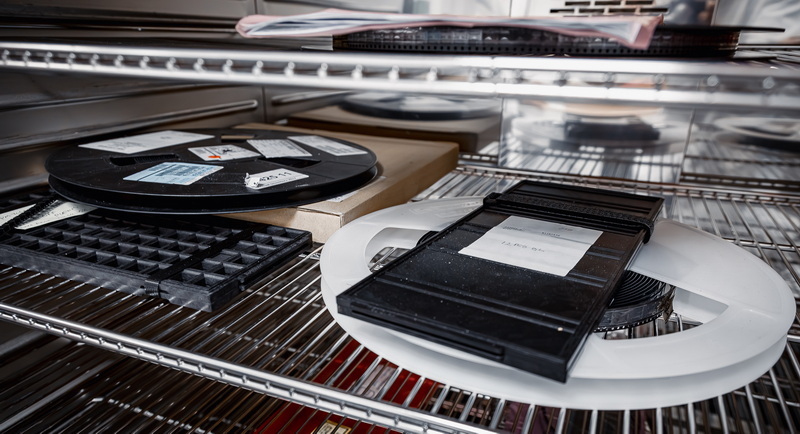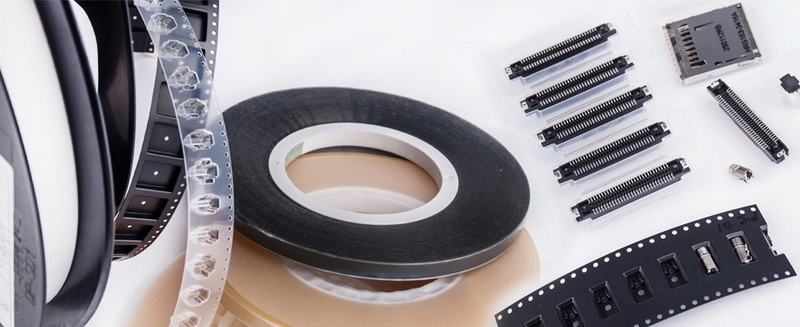Content Menu
● What is SMT Reel Tape?
● Benefits of Using SMT Reel Tape
>> 1. Streamlined Component Handling
>> 2. Compatibility with Automated Systems
>> 3. Reduced Setup Time
>> 4. Enhanced Inventory Management
>> 5. Cost Savings
>> 6. Improved Quality Assurance
● How Does SMT Reel Tape Reduce Production Downtime?
>> Continuous Production Runs
>> Efficient Splicing with SMT Splicing Tapes
>> Improved Accuracy
>> Minimized Waste
>> Reduced Machine Downtime
● Applications Across Industries
● Challenges Associated with SMT Reel Tape
>> 1. Initial Investment Costs
>> 2. Compatibility Issues
>> 3. Training Requirements
● Future Innovations in SMT Reel Tape Technology
● Conclusion
● FAQ: Common Questions About SMT Reel Tape
>> 1. What types of components are packaged using SMT reel tape?
>> 2. How does SMT splicing tape contribute to reducing downtime?
>> 3. What are the environmental benefits of using SMT reel tape?
>> 4. Can SMT reel tape be customized for specific applications?
>> 5. What challenges might arise when using SMT reel tape?
Surface Mount Technology (SMT) reel tape plays a pivotal role in modern electronics manufacturing, offering efficiency, precision, and cost savings. By enabling seamless automated processes, SMT reel tape minimizes production downtime, ensuring smooth operations even in high-volume environments. This article explores how SMT reel tape contributes to reducing downtime and enhancing productivity while diving deeper into its applications, benefits, and challenges.

What is SMT Reel Tape?
SMT reel tape is a specialized packaging format used to store and transport electronic components such as resistors, capacitors, diodes, and integrated circuits. These components are placed into pre-molded cavities on a continuous strip of tape, sealed with a cover tape for protection, and wound onto reels. This packaging format is designed for compatibility with automated pick-and-place machines, which rapidly position components onto printed circuit boards (PCBs) during assembly.
The design of SMT reel tape ensures that each component is securely held in place during transport and storage while remaining easily accessible for automated systems. This combination of protection and accessibility makes SMT reel tape indispensable in modern manufacturing environments.
Benefits of Using SMT Reel Tape
1. Streamlined Component Handling
One of the most significant advantages of SMT reel tape is its ability to streamline component handling. By organizing components in a continuous, precise arrangement, it eliminates the need for manual loading or sorting. This not only reduces labor costs but also minimizes the risk of human error during the assembly process.
2. Compatibility with Automated Systems
SMT reel tape is specifically designed for use in automated pick-and-place machines. These machines efficiently pick components from the tape and place them on PCBs with high speed and accuracy. The compatibility between SMT reel tape and these machines ensures smooth operations, even in high-volume production environments.
3. Reduced Setup Time
Traditional assembly methods often require frequent line stoppages for reloading components or addressing misalignments. With SMT reel tape, manufacturers can achieve longer uninterrupted production runs. The continuous feed system significantly reduces setup time and the need for manual intervention.
4. Enhanced Inventory Management
The compact and organized nature of SMT reel tape simplifies storage and tracking of components. Manufacturers can easily identify and retrieve specific components when needed, reducing the risk of misplacement or shortages that could disrupt production schedules.
5. Cost Savings
By automating component placement and reducing waste through precise handling, SMT reel tape lowers labor costs and material usage. Additionally, its durability reduces the likelihood of damage to components during transport or storage, further contributing to cost-effective manufacturing.
6. Improved Quality Assurance
SMT reel tape ensures that components are consistently oriented for accurate placement on PCBs. This precision reduces defects caused by misaligned or improperly placed components, enhancing overall product quality.

How Does SMT Reel Tape Reduce Production Downtime?
Production downtime can have a significant impact on manufacturing efficiency and profitability. SMT reel tape addresses this challenge through several key mechanisms:
Continuous Production Runs
SMT reel tape ensures a steady supply of components to the assembly line without interruptions. Unlike bulk packaging methods that require frequent reloading or sorting, SMT reel tapes allow for extended production runs. This capability is particularly beneficial in high-volume production environments where even brief periods of downtime can result in substantial delays.
Efficient Splicing with SMT Splicing Tapes
When a reel is about to run out of components, splicing tapes can be used to join the end of one reel to the beginning of another seamlessly. This process eliminates the need to stop production lines for reel replacement, saving valuable time and maintaining workflow continuity.
Improved Accuracy
The precision engineering behind SMT reel tape ensures that each component is consistently oriented within its cavity on the tape. This accuracy allows pick-and-place machines to operate at optimal speeds without errors or misplacements that could lead to rework or delays.
Minimized Waste
Unlike traditional bulk packaging methods that may result in damaged or unused components due to mishandling, SMT reel tape protects each component during transportation and storage. This protection ensures optimal utilization of materials while reducing waste caused by damaged parts.
Reduced Machine Downtime
Automated assembly lines rely heavily on uninterrupted operation to maintain efficiency. By providing a continuous supply of correctly oriented components, SMT reel tapes reduce machine downtime caused by misfeeds or empty feeders.
Applications Across Industries
SMT reel tape is not limited to electronics manufacturing; its versatility makes it valuable across various industries:
- Consumer Electronics: Smartphones, laptops, and wearable devices rely on precise PCB assembly made possible by SMT reel tapes.
- Automotive Industry: Advanced driver-assistance systems (ADAS), infotainment systems, and other automotive electronics benefit from the accuracy and efficiency provided by SMT reel tapes.
- Medical Devices: Compact medical devices such as pacemakers or diagnostic equipment require precise component placement achievable through automated systems using SMT reel tapes.
- Industrial Equipment: Power tools, control systems, and industrial machinery incorporate PCBs assembled with the help of SMT reel tapes.
- Aerospace: High-reliability applications in aerospace electronics demand consistent quality assurance provided by SMT packaging solutions.
Challenges Associated with SMT Reel Tape
While SMT reel tape offers numerous advantages, manufacturers may encounter certain challenges:
1. Initial Investment Costs
Setting up automated assembly lines compatible with SMT reel tapes requires significant upfront investment in equipment such as pick-and-place machines. However, these costs are often offset by long-term savings in labor and material expenses.
2. Compatibility Issues
Ensuring compatibility between existing machinery and new packaging formats can be challenging. Manufacturers must carefully evaluate their equipment specifications before adopting SMT reel tapes.
3. Training Requirements
Operators may require training to effectively manage splicing processes or troubleshoot issues related to automated systems using SMT reels.
Future Innovations in SMT Reel Tape Technology
As technology continues to evolve, innovations in SMT reel tape design are expected to further enhance manufacturing efficiency:
- Eco-Friendly Materials: The development of recyclable or biodegradable materials for SMT reels aligns with sustainability goals.
- Smart Packaging Solutions: Integration of RFID tags or QR codes on reels could enable real-time tracking and inventory management.
- Advanced Splicing Techniques: Improved splicing methods could reduce transition times between reels even further.
These advancements will ensure that SMT reel tapes remain at the forefront of efficient manufacturing practices.
Conclusion
SMT reel tape is an indispensable tool for reducing production downtime in electronics manufacturing and beyond. By enabling continuous production runs, improving accuracy, streamlining inventory management, and minimizing waste, it enhances operational efficiency while lowering costs. As industries increasingly rely on automation to meet growing demands for precision and speed, the role of SMT reel tapes will continue to expand.
Investing in high-quality SMT packaging solutions not only improves productivity but also positions manufacturers for success in competitive markets. With ongoing innovations in materials and design, the future of SMT reel tapes promises even greater contributions to efficient manufacturing processes.

FAQ: Common Questions About SMT Reel Tape
1. What types of components are packaged using SMT reel tape?
SMT reel tape is used to package electronic components such as resistors, capacitors, diodes, LEDs, transistors, inductors, connectors, sensors, and integrated circuits (ICs). These components are essential for PCB assembly across various industries like consumer electronics and automotive manufacturing.
2. How does SMT splicing tape contribute to reducing downtime?
SMT splicing tapes join the ends of component reels seamlessly without halting production lines. This allows pick-and-place machines to continue operating without interruptions caused by empty feeders or manual replacements.
3. What are the environmental benefits of using SMT reel tape?
Many manufacturers now produce eco-friendly versions of SMT reel tapes made from recyclable materials like paper-based carriers or biodegradable plastics. These innovations reduce waste generation while supporting sustainable manufacturing practices.
4. Can SMT reel tape be customized for specific applications?
Yes! Manufacturers offer customization options such as varying pocket sizes on carrier tapes based on unique component dimensions or adding anti-static properties required by sensitive electronic parts like microprocessors.
5. What challenges might arise when using SMT reel tape?
Challenges include initial investment costs associated with upgrading machinery compatible with automated feeding systems relying upon standardized dimensions/spacing found within modern-day carrier designs alongside operator training requirements needed before full-scale implementation occurs successfully!




















